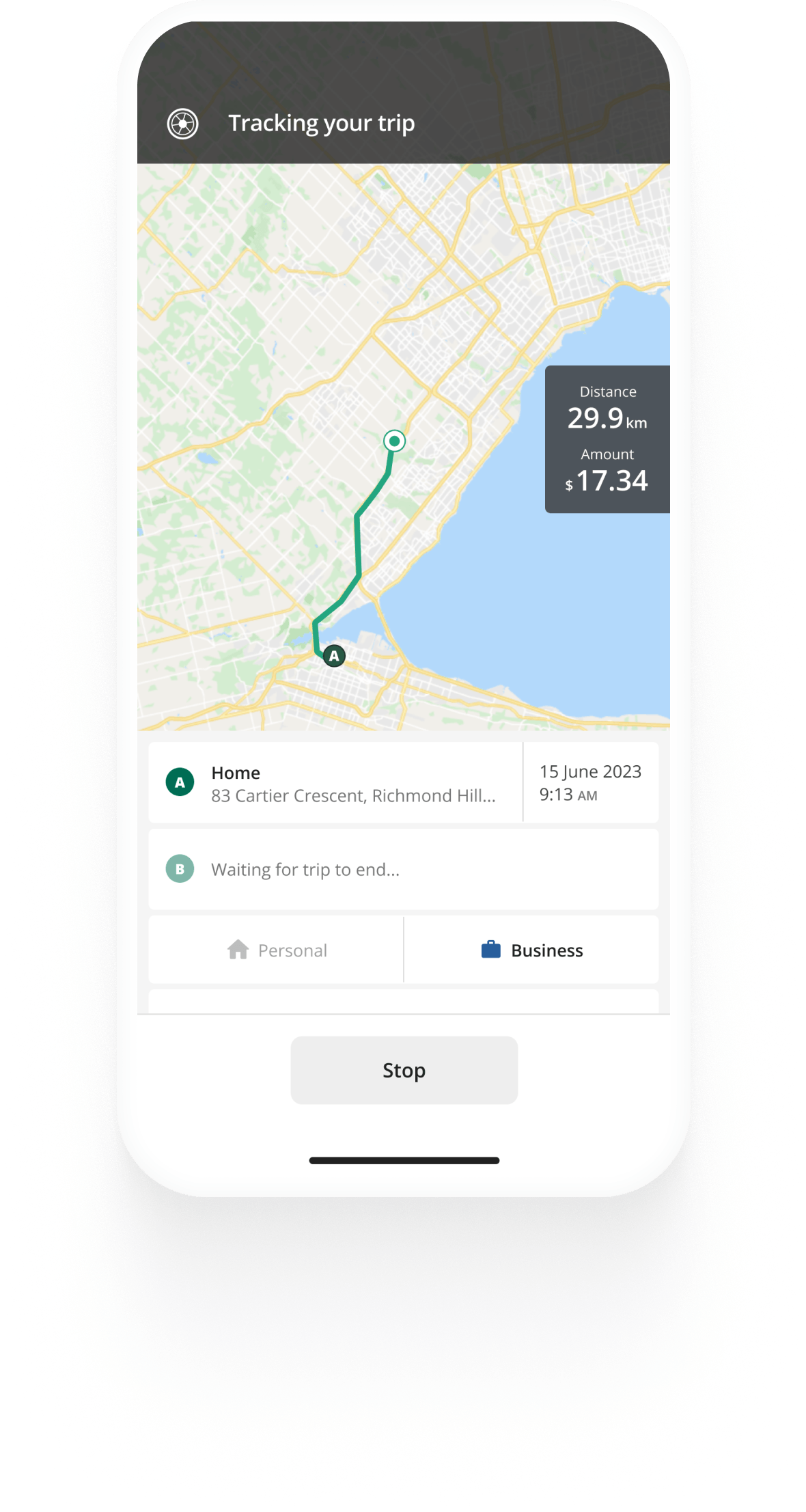Track mileage automatically
Get startedCRA Vehicle Allowance Rules For Employers
Whether your employees drive company cars or their personal vehicles for business, they generally expect to be compensated for work-related car expenses.
If you pay out a vehicle allowance to employees, it is tax-free for your business if done under specific regulations (as reimbursements are deductible business costs), and it also helps your company pay less tax.
In the sections below, we'll go through the CRA vehicle allowance requirements for employers and business owners, as well as your options and best practices for a vehicle allowance reimbursement program.
We have a solution called Driversnote for Teams, designed to automatically track business mileage and create CRA-compliant reports with the touch of a button. But more on that later.
CRA rules for vehicle allowances
The CRA considers an allowance to be any payment to employees for their business-related use of a personal vehicle. Vehicle allowances are paid out with employees’ salaries and are taxable unless based on the reasonable CRA vehicle expenses per km rate.
The CRA considers an allowance “reasonable”, which means it will not be taxed when it fulfils the following criteria:
- The allowance is paid out only for the number of business-related kilometres of employees
- You use a reasonable per-kilometre rate - at or slightly lower than the official CRA vehicle allowance rates, depending on the type of vehicle
- You haven’t provided any other employee reimbursement for the same business usage of the company or personally-owned vehicle
If the vehicle allowance you provide meets all the aforementioned criteria, you will not need to deduct income tax, EI premiums or CPP contributions from employees' allowance amounts.
Any vehicle allowance you pay out that does not meet these criteria should be taxed.


Track business driving with ease
Trusted by millions of drivers
Automate your logbook Automate your logbook

Automatic mileage tracking and CRA-compliant reporting.
Get started for free Get started for freeInstances the CRA considers vehicle allowances taxable
- You provide a per-kilometre rate that is too high compared to the reasonable per-kilometre CRA rates for vehicle expenses of employees.
- You provide a rate that is too low compared to the official CRA vehicle allowance rates.
- You provide an allowance at a flat rate which is not based on the number of business kilometres employees have driven.
In all instances, the CRA will consider the vehicle allowance a benefit, and you will have to deduct income, pension and insurance tax from it.
In these situations, employees might be able to claim their vehicle expenses from the CRA on their tax returns.
Employees using company-provided vehicles
If an employee is using a company car, the rules are a little more complicated, depending on if you pay operating costs, if the employee is able to use the car for personal purposes, and more. Learn more about these rules here, as they will impact taxation and other costs required by the CRA.
The standard CRA vehicle allowance rate
Each year, the CRA sets a reasonable per-kilometre rate for work-related car expenses. It represents the highest rate at which you can reimburse each kilometre driven for business. without taxing employees on the reimbursement.
Other methods of covering employee car expenses may be treated as income and taxed.
How much you can pay for vehicle expenses per kilometre
You can choose to use a different cents per km rate than the CRA official, but most companies consider the CRA rate the standard. If you provide a higher per-kilometre rate for employee vehicle allowances, the CRA will consider the whole allowance taxable.
The reasonable vehicle allowance rates per km for 2025 are:
- 72 cents per km for the first 5,000 kilometres driven
- 66 cents for each km after that
The Northwest Territories, Yukon, and Nunavut have an additional 4 cents per km for business-related driving.
Mileage reimbursement for teams with Driversnote
If you are looking for a solution for your vehicle allowance program, you can try our Teams solution.
Driversnote Teams enables you to provide employees with a simple solution for automatic tracking of their work kilometres, while you receive consistent mileage reports for their vehicle allowances.
Wondering how to create a team? Check out the video below.
Best practices when providing a CRA vehicle allowance
It is a good idea to have employees record their business-related kilometres. This helps your company avoid over-reported vehicle allowance claims and ensures that your employees receive what they're entitled to. Employees won’t need to keep invoices and receipts of vehicle expenses if you provide an allowance based on the CRA rate per kilometre.
FAQ

Tired of logging mileage by hand?
Effortless. CRA-compliant. Liberating.
CRA Mileage Guide
- For Self-Employed
- For Employees
- For Employers
- Mileage Log Requirements
- How To Calculate Mileage Reimbursement
- Is Car Allowance Taxable?
- Claim Motor Vehicle Expenses In 5 Steps
- Current and Historic CRA Mileage Rates
- Historic Mileage Allowance Rates
- Current CRA Mileage Rates